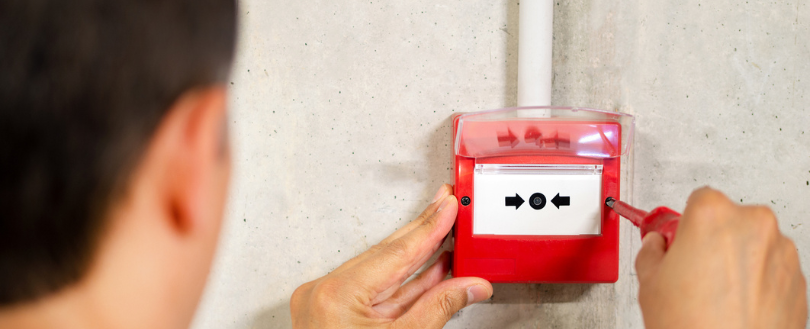
BS 5839-1:2025 – Strengthening the Foundations of Fire Safety
Like it? Share it!
14 October 2025
With the UK’s fire safety framework evolving rapidly, one truth has become unmistakable: competence saves lives. In an era of heightened accountability and regulatory reform, the design and maintenance of fire detection and alarm (FD&A) systems have never been more important.
At the forefront of this effort is the Fire Industry Association – the UK’s largest fire protection trade association working to raise professional standards, promote best practice, and help organisations navigate the latest developments in fire safety regulation.
The release of BS 5839-1:2025, the updated code of practice for non-domestic FD&A systems, marks a major milestone. It introduces new requirements, clarifies responsibilities, and strengthens the connection between design intent, installation quality, and ongoing maintenance.
What’s New in BS 5839-1:2025
The new edition of the standard came into effect on 30 April 2025, replacing the 2017 version. While its purpose remains the same – to guide the design, installation, commissioning, and maintenance of FD&A systems, the 2025 update reflects lessons from real-world experience and the changing technological landscape.
Among the most notable updates are:
- A refreshed structure and numbering system, bringing greater clarity and consistency across clauses. Practitioners should ensure all documentation, certificates, and internal references are updated to match the new format.
- Revised terminology, now aligned with BS 4422. For instance, “handover” replaces “acceptance” and “fire and rescue service” replaces “fire service”, promoting consistency across UK standards.
- Clearer accountability, ensuring that the roles of designers, installers, commissioners, and maintainers are explicitly defined. The standard requires responsibilities for key deliverables – such as zone plans and cause-and-effect documentation – to be agreed and recorded.
- Tighter rules on variations, including new guidance on what constitutes an unacceptable deviation. The absence of a zone plan or of required remote monitoring in care premises is now explicitly non-compliant.
- Strengthened measures for false alarm reduction, including the introduction of a standardised false alarm notice to be displayed at control equipment linked to the fire and rescue service.
- New guidance for digital connectivity, reflecting the upcoming Public Switched Telephone Network (PSTN) switch-off and the rise of all-IP networks. The standard now specifies maximum transmission times for alarm signals and includes provisions on cyber security and remote access controls.
Collectively, these updates bring a sharper focus on competence, documentation, and proactive management, ensuring that systems remain effective long after installation.
Practical Steps for Duty Holders
For building owners, facilities managers, and responsible persons, the new standard translates into clear, actionable steps:
- Confirm that all documentation – including logbooks, cause-and-effect descriptions, and zone plans is complete and up to date.
- Review false alarm procedures and ensure every unwanted alarm is investigated and recorded, with corrective measures applied where necessary.
- Verify that remote monitoring arrangements meet the updated performance and timing requirements, particularly in residential care and supported housing.
- Check that service intervals align with the recommended six-month schedule and that all inspections are properly documented.
- Assess access to interfaces such as smoke control and door release systems, ensuring they can be inspected safely.
These measures not only align with BS 5839-1:2025 but also demonstrate due diligence under the Building Safety Act and other fire safety legislation.
Supporting Industry Understanding Through the FIA Roadshow
To help professionals interpret and apply the revised standard, the FIA launched its BS 5839-1:2025 Standards Update Roadshow. The nationwide series, delivered both in person and online, reached thousands of participants, offering practical insights and accredited CPD.
Led by FIA technical experts, the sessions broke down complex revisions into straightforward, scenario-based discussions. Attendees valued the chance to clarify details, ask questions, and benchmark their current practices against the new expectations.
This initiative forms part of the FIA’s wider commitment to bridge the gap between regulation and real-world implementation, helping the industry move forward together.
Competence and Continuous Development
Competence is the thread that runs through every section of BS 5839-1:2025. It is also the foundation of the FIA’s training philosophy. The Association’s FD&A training pathway supports professionals at all stages from foundation level through to advanced qualifications for designers, installers, commissioners, and maintainers.
By completing FIA training, professionals can demonstrate the technical capability, up-to-date knowledge, and continuing professional development (CPD) that the standard requires. For employers and clients, this delivers measurable assurance of competence and compliance.
A Shared Responsibility for Safer Buildings
The 2025 revision of BS 5839-1 is more than a technical update – it is a call for collective responsibility. Designers, installers, commissioners, maintainers, and building managers each have a vital role to play in ensuring that systems perform as intended.
By aligning practices with the new standard, documenting procedures, and maintaining professional competence, the industry can reduce unwanted alarms, improve system reliability, and protect lives.
The FIA will continue to support that mission through guidance, training, and advocacy helping every part of the fire sector deliver safer outcomes for the people and places they protect.
